If you are passionate about indoor gardening, love plants as part of your interior décor, or just have a couple of houseplants, bugs are often an undesired extra. While indoor plants tend to experience fewer insect problems than those outside in your garden, they will have their share of needs and problems.
What begins with a bug or two can become a full-blown infestation without treatment that can overtake that luscious vibrant greenery and potentially destroy it in the process.
But do the indoor plants attract bugs?
Not really, most pests are not lured by the houseplants themselves, but by the environment that your plants thrive in.
However, there is good news! You can follow several simple suggestions to prevent pest infestations while keeping your potted plants happy.
Growing Conditions that Attract Houseplant Pests
Several indoor conditions can be highly attractive to houseplant pests. Here are several of the most attractive conditions for bugs:
1. High Humidity
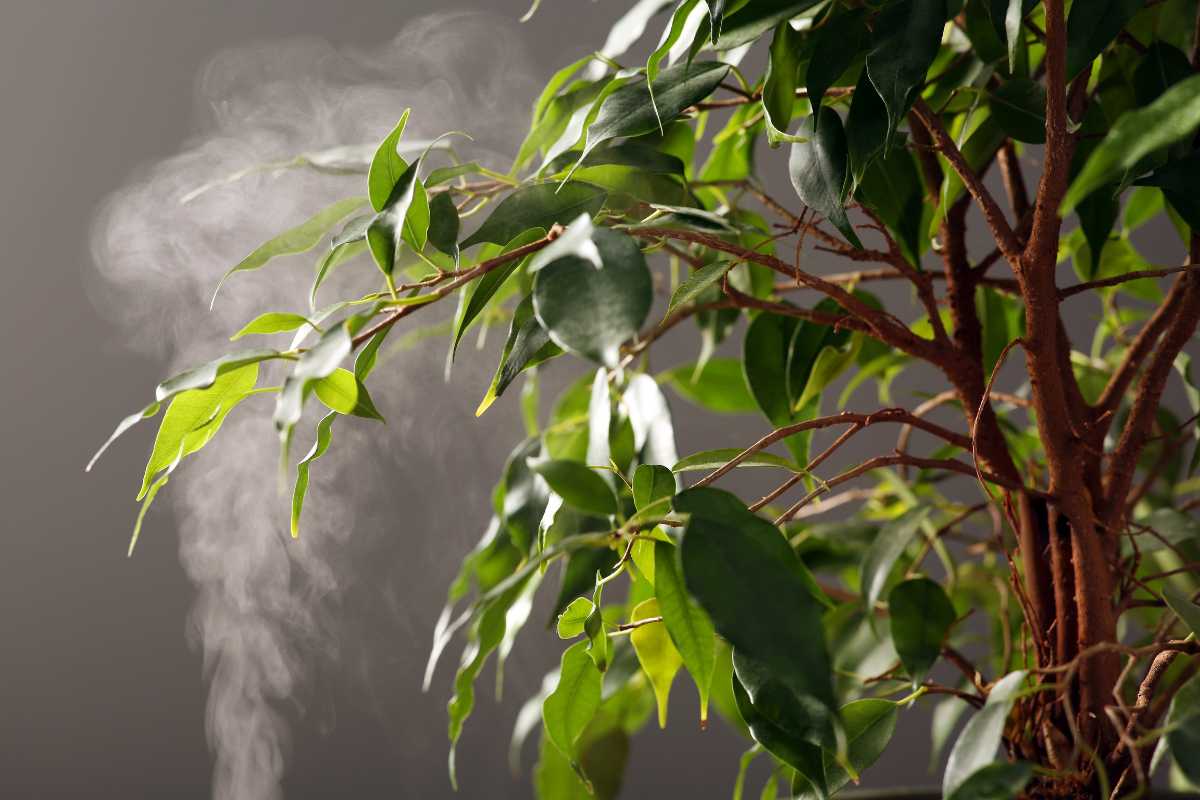
High humidity levels are a magnet for a lot of insects. Insects need moisture for survival, so they instinctively seek out humid areas to reside.
Now, this doesn’t mean that you have to stop using your plant humidifier or pebble tray, but know that there are several conditions that contribute to high humidity and a few that can be avoided.
The climate conditions where you live can influence your home humidity level. If you live in a dry or desert region, then no worries, keep that humidifier within reach. If, on the other hand, you live near a large body of water like a lake or near one of the coasts, you are bound to have natural high humidity in your home.
The principal cause of houseplant death is also attractive to bugs, and this is overwatering. If you water your plants too frequently or give them too much water, as the water in the soil gradually evaporates, it will raise humidity levels around your plants.
Overwatering and soggy, waterlogged soil beds should be avoided like the plague.
Water left standing in saucers, dishes, or vases that host flowerpots will inevitably collect water that drains from the plant.
For this reason, it’s a good idea to leave your plants to thoroughly drain in a sink, tub, or even outdoors, weather permitting. Don’t let them drain into containers underneath plants.
2. Lack of Air Circulation
Air circulation is fundamental in managing high humidity. It will reduce the humidity around plants as well as speed up the drying of soil beds. With moist, but not overly moist soil, there is less risk of attracting insects and or encouraging fungal growth.
What can inhibit air circulation around your plants?
- Lack of Space – If your plants are placed too closely near one another, this will impede air circulation. I have a corner with a large west-facing window where I have at least a dozen or more plants. Some are quite large. While I do place them near each other to achieve a nice humidity level, I don’t allow my plants to touch. One of my reasons for this is to allow adequate air circulation between leaves.
- Lack of Air – This may seem improbable, but places in your home or office that do not have windows or doors, or even vents, will receive little or no movement of air. If you have no choice as to location, consider using a small gentle fan in the area to improve circulation. Windows and doors should be left open occasionally to promote air circulation.
3. Poor Potting Soil
Using old potting soil that perhaps has been lying around open for some time should be avoided. If the bag of soil has been left open, there is a good chance that insects have laid eggs or taken up residence in the potting soil. Potting soil left open should be sterilized before being used.
The same is true for dirt from your backyard or outdoor garden. It may contain insects, fungus, and perhaps infections that will then be transferred to your houseplants and indoor garden.
Common Bugs Found On Indoor Plants
While there are fewer bugs on indoor plants when compared to outdoor garden plants, there is nonetheless a group of at least a dozen or so that are quite prevalent on indoor plants.
Here are the most common houseplant plests that you should be on the lookout for.
1. Aphids
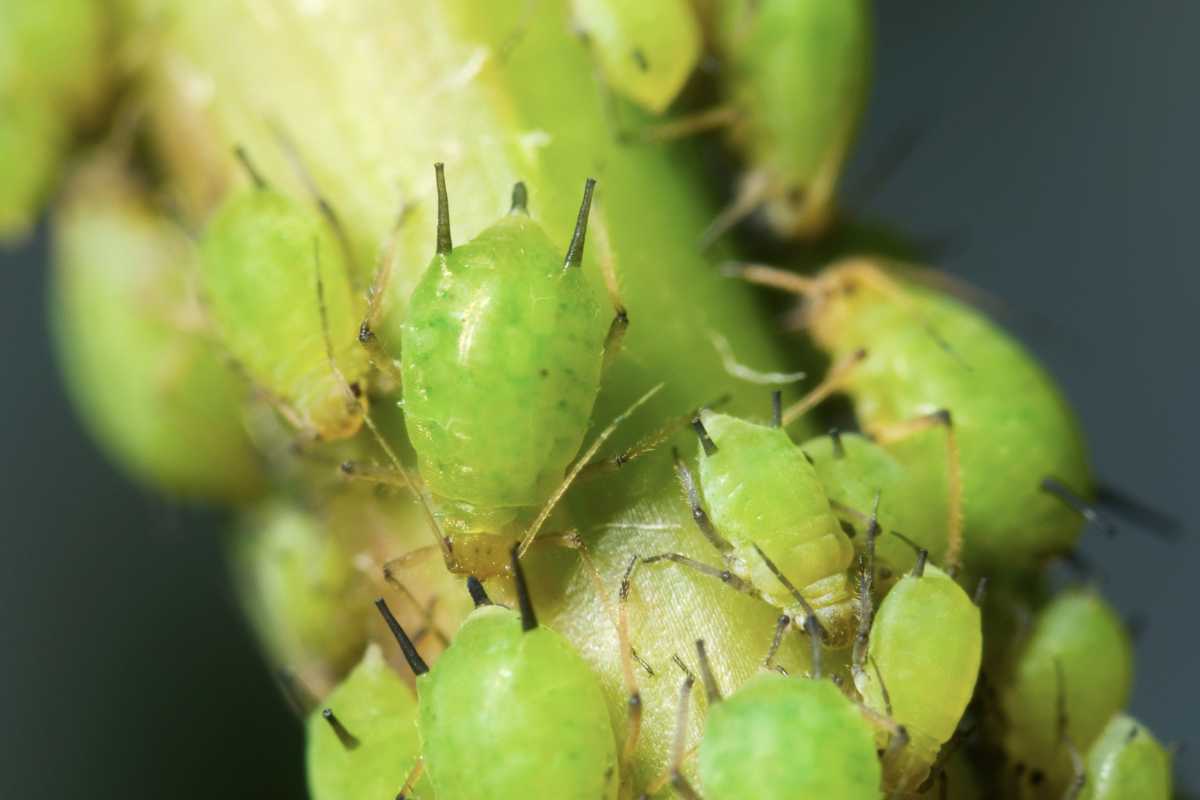
Aphids reproduce prolifically. These tiny pests which can take on the appearance of microscopic white or translucent spots.
They will attach themselves to plants and suck the plant’s sap from the stems and leaves. Leaves will feel sticky to the touch because they secrete honeydew. Leaves will also yellow and distort if left untreated.
2. Fungus gnats
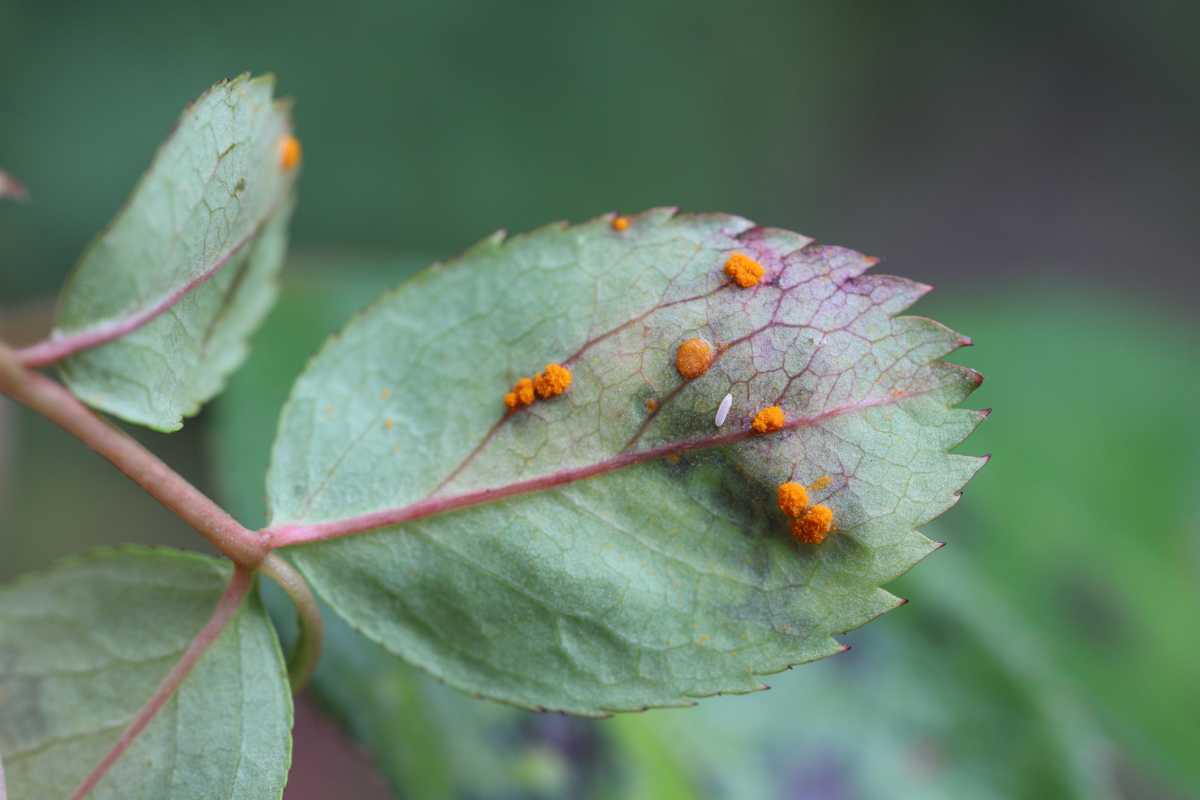
Found teeny flies around your plants? They are most probably fungus gnats.
These insects do not cause a great amount of damage to plants per se, but their larvae within the soil bed can feed off plant roots, leaving wounds.
Larvae can be found on fungi or decaying organic matter found naturally within a soil bed.
3. Mealybugs
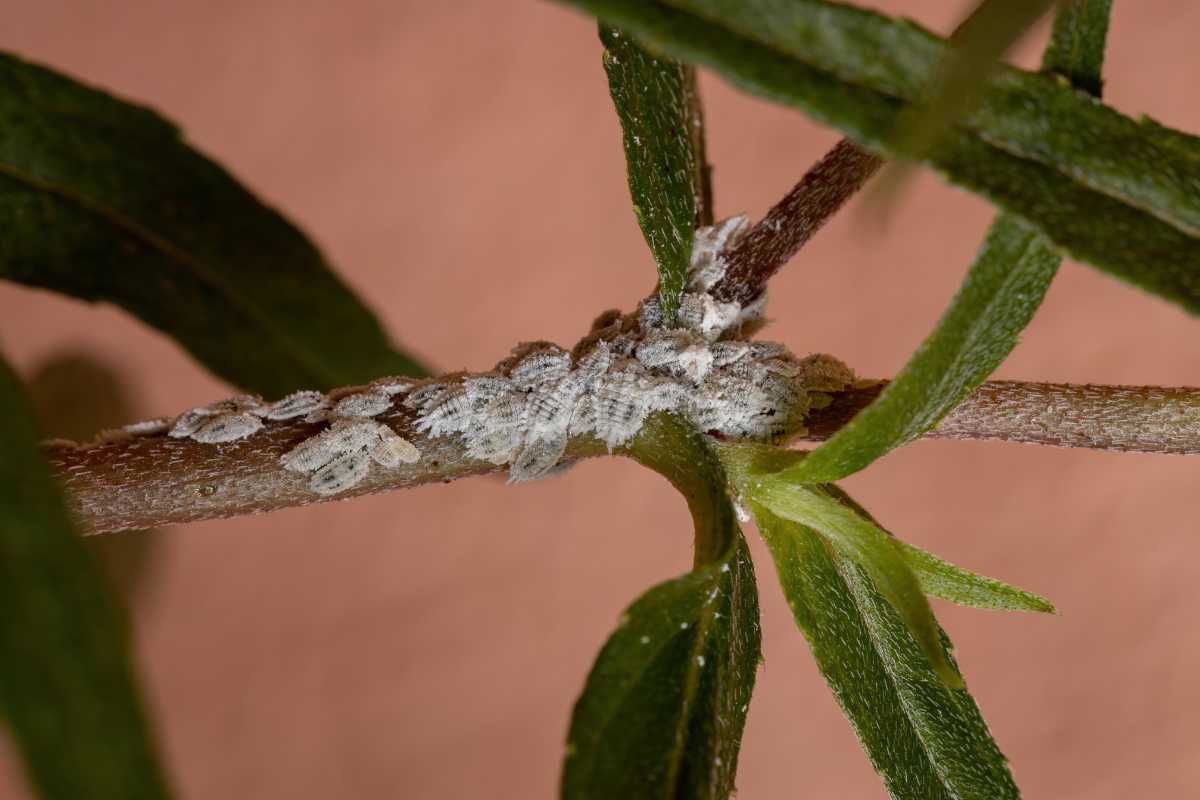
Pink and soft, mealybugs are easily detected because they are generally covered with a white, cotton-like material, which reminds me of cotton ball bits.
This covering is protective of the bugs and makes them very noticeable. Usually found in groups, they attach themselves to points where foliage and stems join.
Mealbugs also produce honeydew that is left on the leaves They will cause stunted growth to the plant’s foliage.
4. Scale Insects
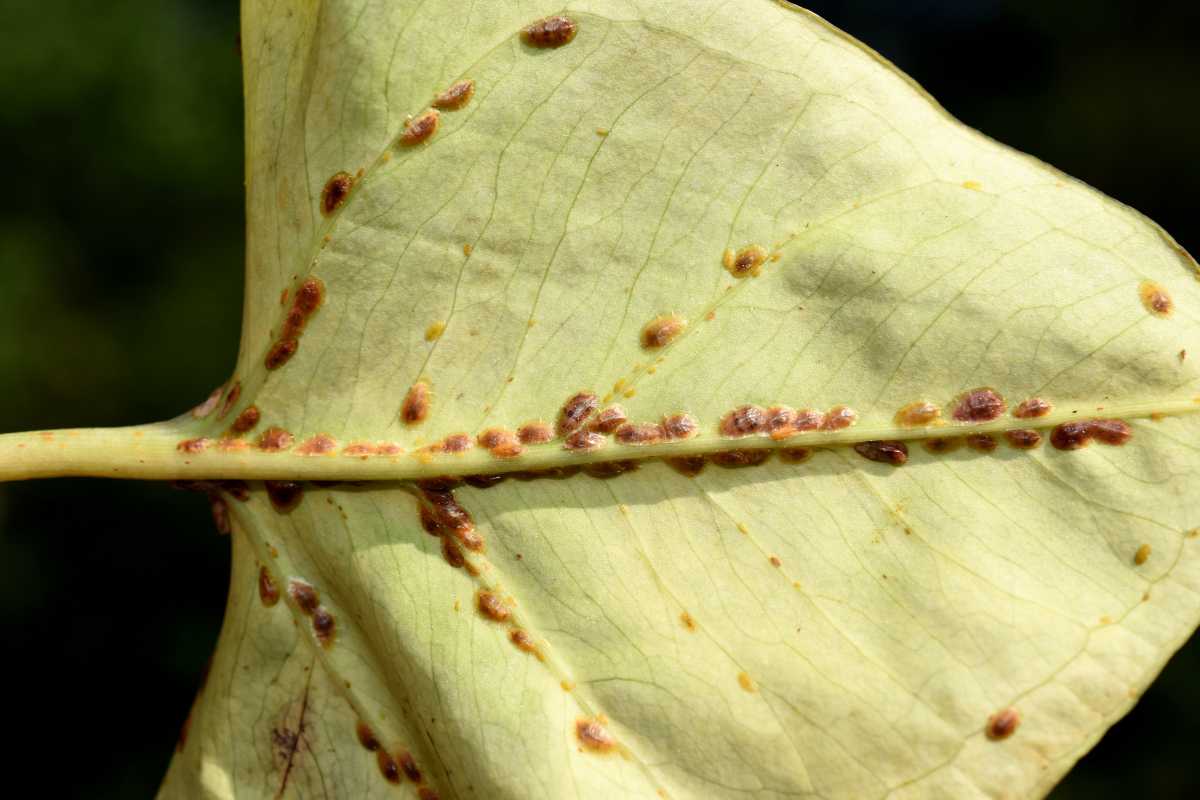
Scale insects are found in two varieties: armored or soft-bodied, and they appear as small pinpoint brown lumps on houseplants.
Scales pierce leaves to suck out the sap. Indications of their presence include leaf yellowing, yellow spots, wilting, plant weakness, and leaf drop.
5. Spider Mites
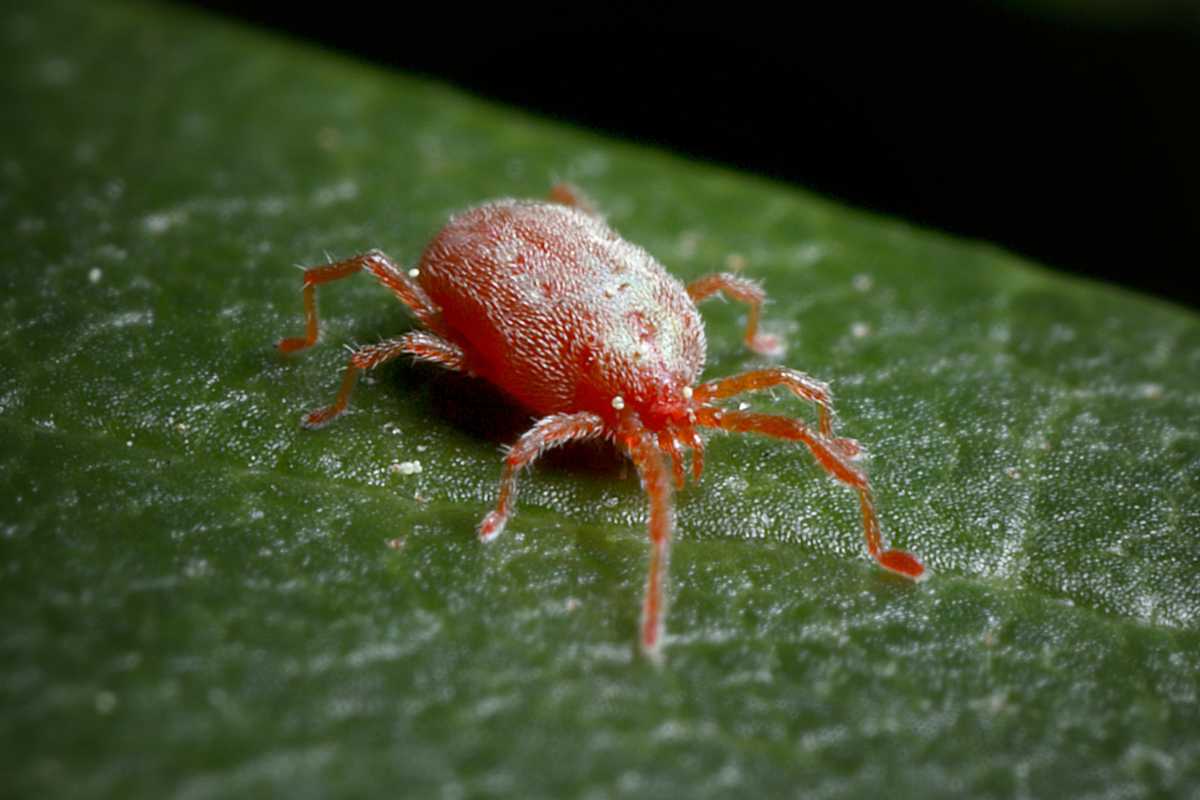
Spider mites are almost invisible to the eye and prefer dryer, warmer environments, but their webbing is not.
You’ll find tiny spider webs attached to foliage both on the undersides and tops of leaves. These spider mites pierce foliage to nourish themselves with the sap.
They reproduce at the speed of light and the plant will change its appearance. Leaves will yellow or discolor.
6. Thrips
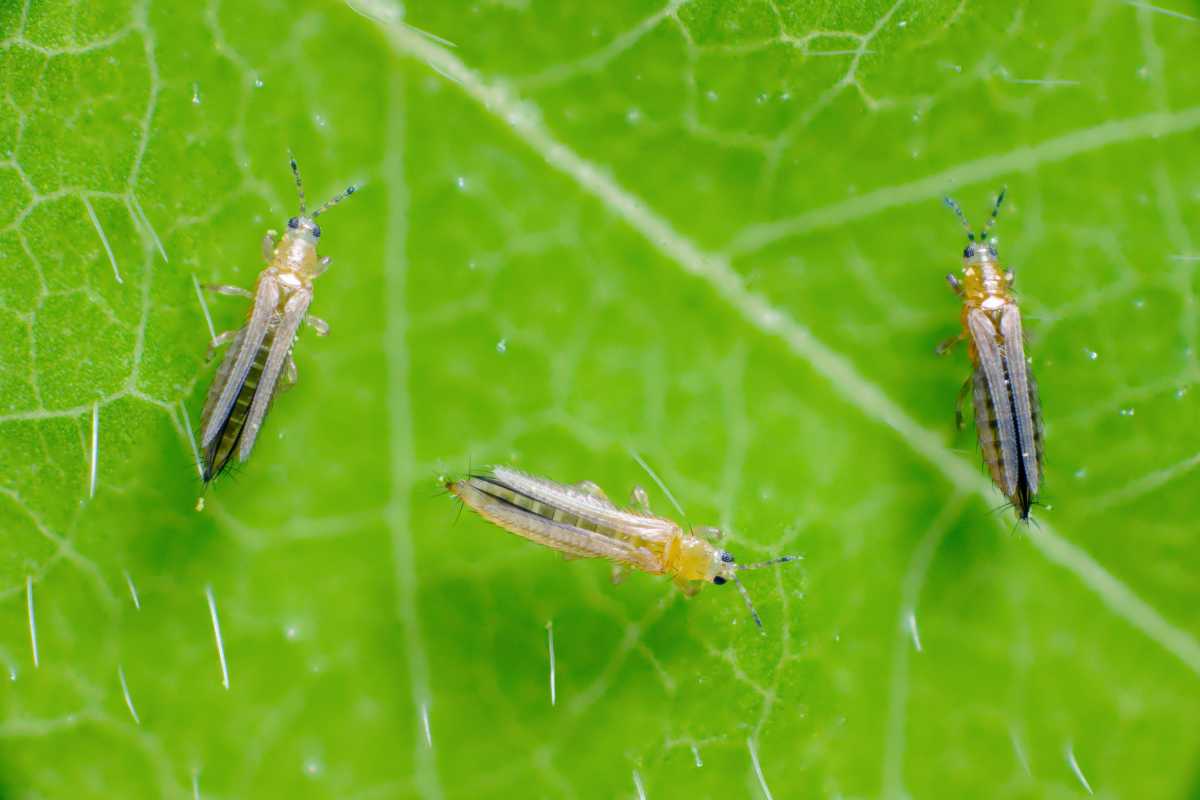
Thrips are microscopic, fringed-wing insects that also feed on plant sap.
Evidence of their presence blotches on foliage that will become progressively pale, then silver, and then die. Another risk with thrips is that they are carriers of plant viruses.
7. Whitefly
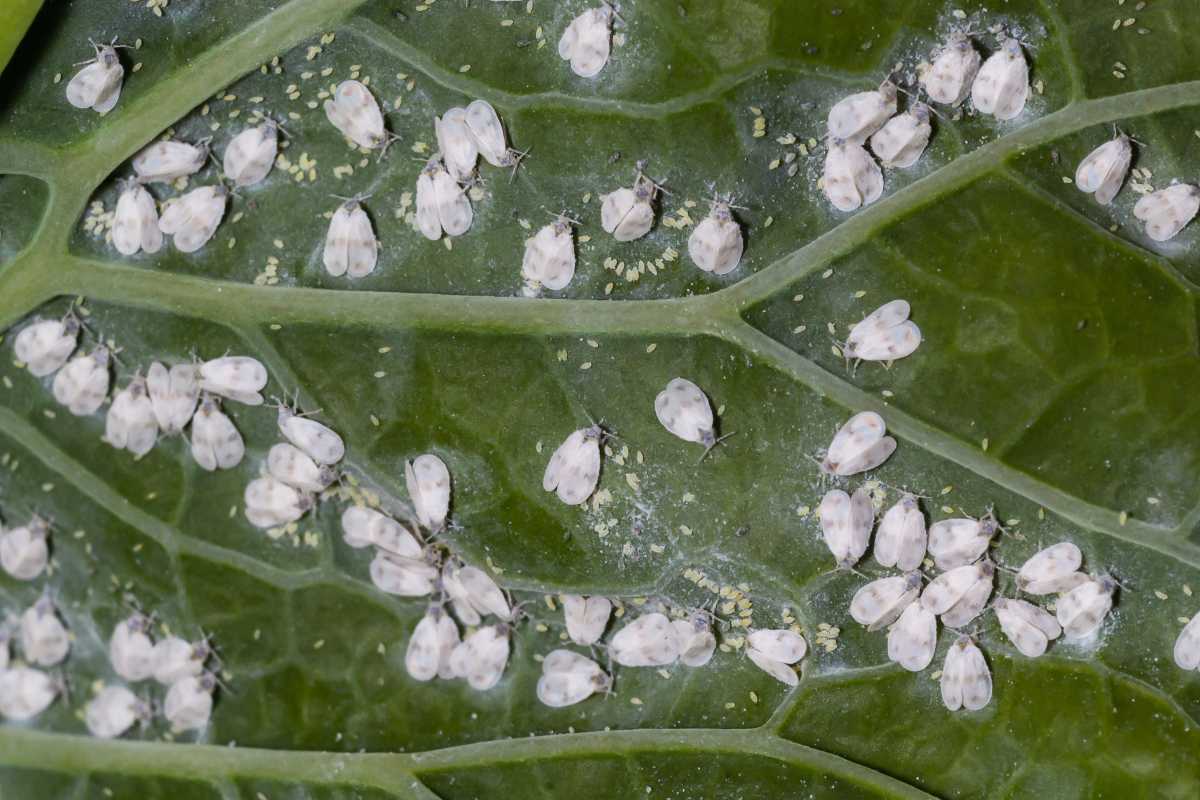
The whitefly is a relative of aphids and scale. They are pale and covered with a white powdery wax substance.
These sapsuckers will also leave behind honeydew. You’ll be able to easily spot them because they will fly away if the plant is moved.
You’ll know you have whiteflies if the plant foliage is stunted, yellowed, and eventually drop.
Best Houseplants That Can Resist Bugs
There are a number of houseplants that are actually resistant to pests and their infestations. This type of plant may produce a scent or have a wax-like surface that makes it difficult for pests to pierce and feed.
Some of these plants include:
- Air Plants
- Bromeliads
- Chinese Evergreens
- Coleus
- Dracaena
- Jade Plants
- Snake Plants
- And the insect-eating Venus Fly Trap
The Worst Houseplants for Bugs
The worse houseplants for attracting bugs are those plants that require high levels of humidity to thrive. Many tropical plants like a humid environment, so it’s common with those.
A few other examples are:
- Calatheas
- Ferns
- Peace Lily
Tips to Prevent Houseplants Pests
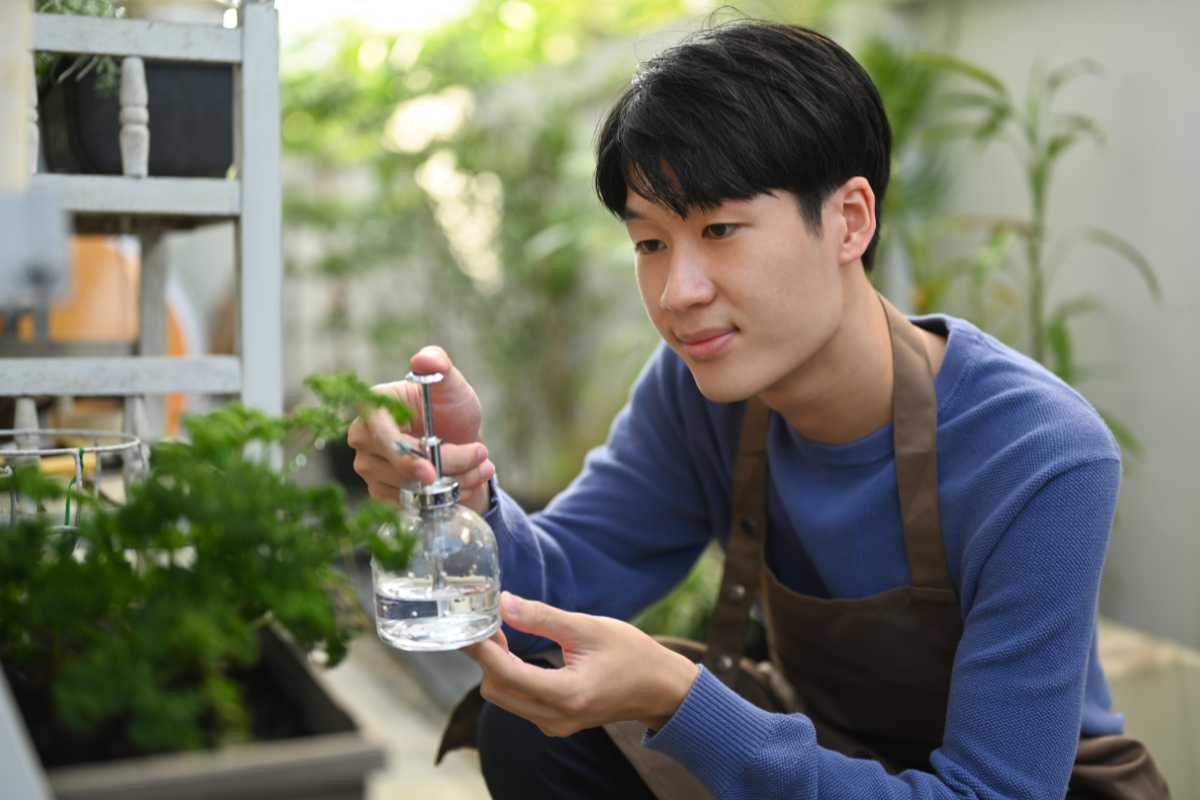
Prevention is generally the best method for avoiding pest infestation within your home or office. Here are suggestions to help you avoid bugs while safeguarding your houseplants.
- Thoroughly check out any new plants you are thinking of purchasing or bringing home. Garden centers, nurseries, and even florists tend to group many plants together, thus there is a bigger risk for bugs to have attached themselves to those plants for sale.
- Always remove leaves, stems, or plant parts that look diseased or are dead immediately. I usually give my plants the once over daily for dead foliage. Do not let dying organic matter fall to the soil bed. Remove it and dispose of it. Organic debris left to degrade is an open invitation for pests to take up residency.
- Group your plants together for humidity or décor needs, but do leave space between them for airflow.
- Take a good look at plants daily if possible and be on the lookout for traces or pests if they are visible. Early detection allows for early intervention. Also, take care to inspect when watering or spraying leaves.
- If you repot a plant, avoid using soil from your yard or garden, and do not use potting soil that has been left sitting in the open for a long time. These sources of potting soil can contain insect eggs, larvae, and even undesired fungus.
- If you do find evidence of pests, treat your plant immediately. Quarantine it away from other plants. Then, depending on the bug, you may want to remove the pests manually, give your plant a good hosing down to remove them, or use organic pest control methods like insecticidal soap or neem oil.
- If you move your houseplants onto a porch, deck, or veranda during warmer weather, always inspect them before bringing them back inside. Outdoor pests may have decided they’ve found a new home thinking they are outdoor plants.
Indoor Plants and Bugs Final Thoughts
Indoor plants provide beauty and enjoyment to our homes, and they also add life to our lives. However, we must make sure we don’t bring unwanted pests into our homes by keeping our houseplants free of insects.
Learn more about houseplants with these articles:

